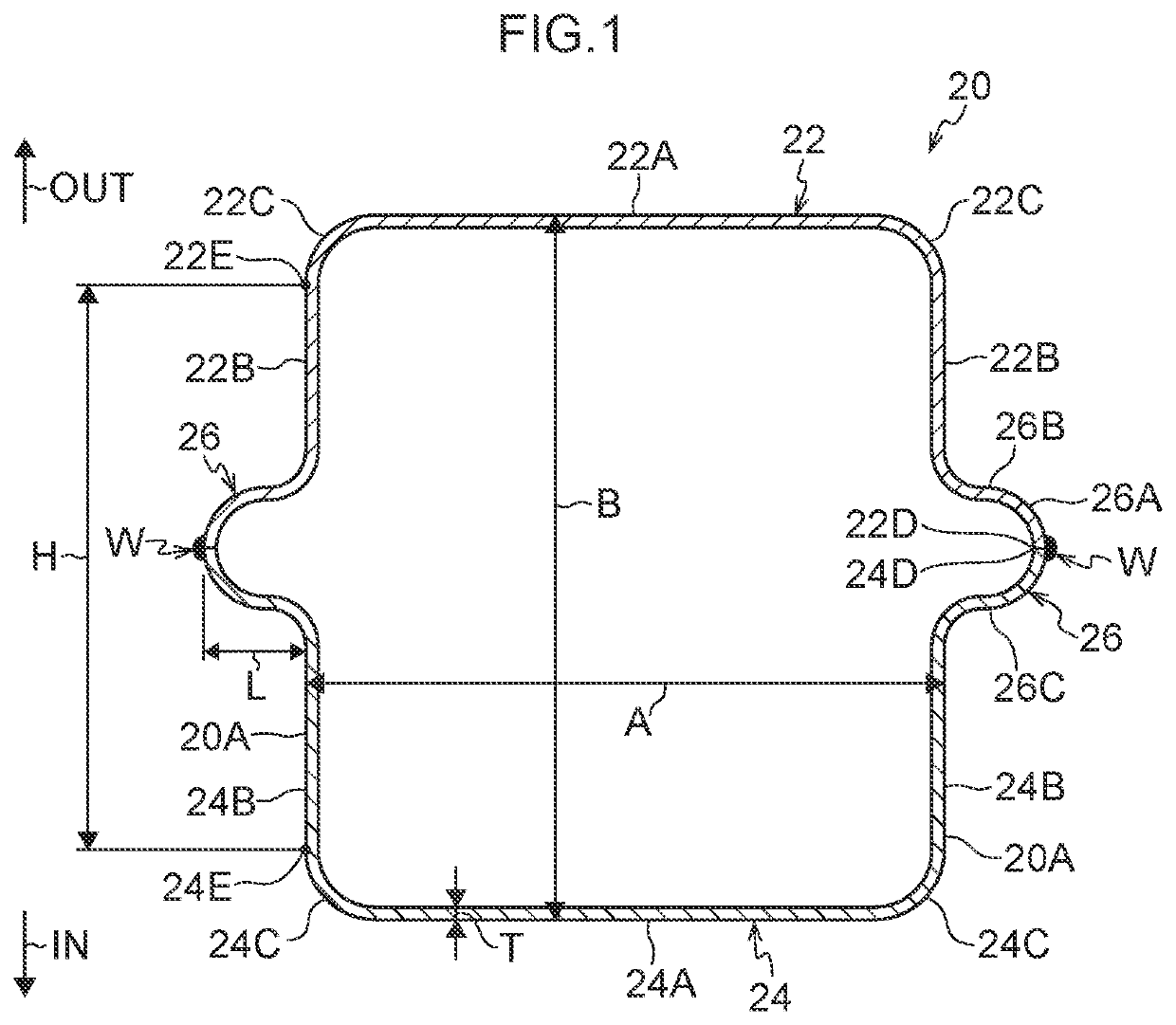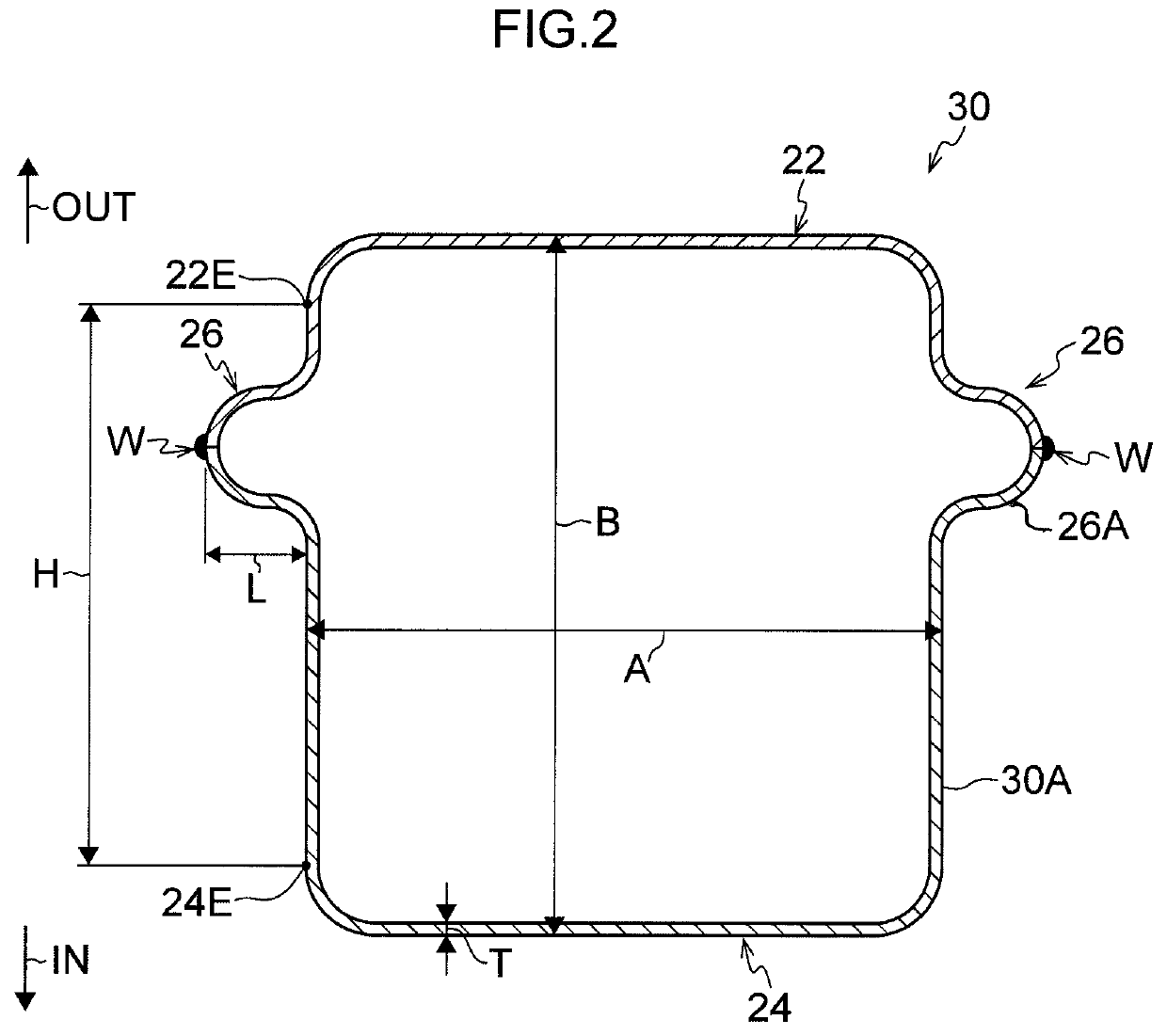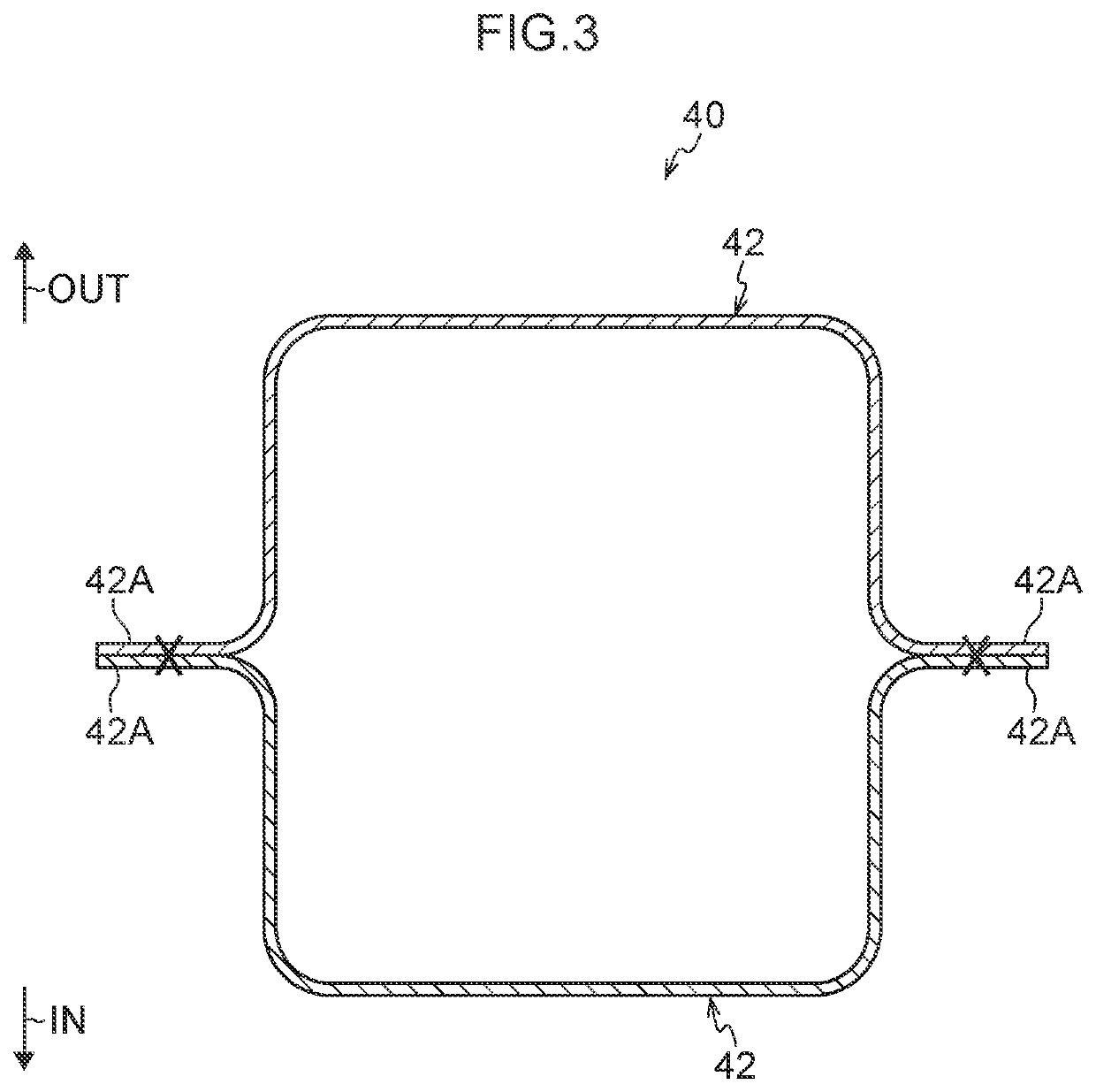Vehicle frame member
a vehicle frame and member technology, applied in the field of vehicle frame members, can solve the problems of decreasing the mass efficiency of the vehicle frame member (maximum bending load/mass), and achieve the effects of reducing or preventing bending deformation, improving maximum bending load, and improving mass efficiency (maximum bending load/mass)
- Summary
- Abstract
- Description
- Claims
- Application Information
AI Technical Summary
Benefits of technology
Problems solved by technology
Method used
Image
Examples
first exemplary embodiment
[0026]Explanation follows regarding a vehicle frame member according to a first exemplary embodiment of the present disclosure.
[0027]Vehicle Frame Member
[0028]As illustrated in FIG. 1, a vehicle frame member 20 of the present exemplary embodiment is an elongated member made of metal, and is a member that configures a frame of a vehicle. The vehicle frame member 20 may be employed, for example, in a center pillar (B pillar), a dashboard cross member, front bumper reinforcement, a rear cross member, or rear bumper reinforcement. Note that the vehicle frame member 20 may be employed as a member other than the aforementioned vehicle frame configuration members.
[0029]The vehicle frame member 20 includes an outer panel 22, an inner panel 24, and beads 26. In FIG. 1, the arrow OUT indicates a vehicle outer side (collision load input side) and the arrow IN indicates a vehicle inner side, from the perspective of the vehicle frame member 20 when provided at a vehicle. Note that in cases in wh...
second exemplary embodiment
[0045]Explanation follows regarding a vehicle frame member according to a second exemplary embodiment of the present invention.
[0046]Vehicle Frame Member
[0047]As illustrated in FIG. 2, a vehicle frame member 30 of the second exemplary embodiment is configured similarly to the vehicle frame member 20 of the first exemplary embodiment except with regard to the position of the beads 26, and so explanation follows regarding the position of the beads 26. Note that in the vehicle frame member 30, configurations similar to those of the vehicle frame member 20 of the first exemplary embodiment are appended with the same reference signs, and explanation thereof is omitted.
[0048]In the vehicle frame member 30, the apexes 26A of the beads 26 are positioned to a vehicle outer side of the vehicle interior-exterior direction central position of the closed cross-section structure configured by the outer panel 22 and the inner panel 24.
[0049]Explanation follows regarding operation and advantageous ...
example 1
[0059]The vehicle frame member of Example 1 has the same structure as the vehicle frame member 20 of the first exemplary embodiment (see FIG. 1). Accordingly, explanation of the vehicle frame member of Example 1 draws on the example of the vehicle frame member 20 of the first exemplary embodiment. The vehicle frame member of Example 1 is configured with cross-section size A (widthwise in the drawing)×B (heightwise in the drawing) of 65 mm×70 mm, and is configured with a plate thickness T of 1.0 mm. Further, the vehicle frame member of Example 1 is configured by a double layer of 1180 MPa grade sheet steel. Moreover, the apexes 26A (peak points) of the beads 26 are positioned at the vehicle interior-exterior direction central position. In other words, when the length of each side-face 20A of the vehicle frame member 20 is H, the apex 26A of each bead 26 is positioned at a position 0.5 H. Further, a projection height L of each bead 26 is 10 mm. Note that the length H of each side-face...
PUM
 Login to View More
Login to View More Abstract
Description
Claims
Application Information
 Login to View More
Login to View More - R&D
- Intellectual Property
- Life Sciences
- Materials
- Tech Scout
- Unparalleled Data Quality
- Higher Quality Content
- 60% Fewer Hallucinations
Browse by: Latest US Patents, China's latest patents, Technical Efficacy Thesaurus, Application Domain, Technology Topic, Popular Technical Reports.
© 2025 PatSnap. All rights reserved.Legal|Privacy policy|Modern Slavery Act Transparency Statement|Sitemap|About US| Contact US: help@patsnap.com



